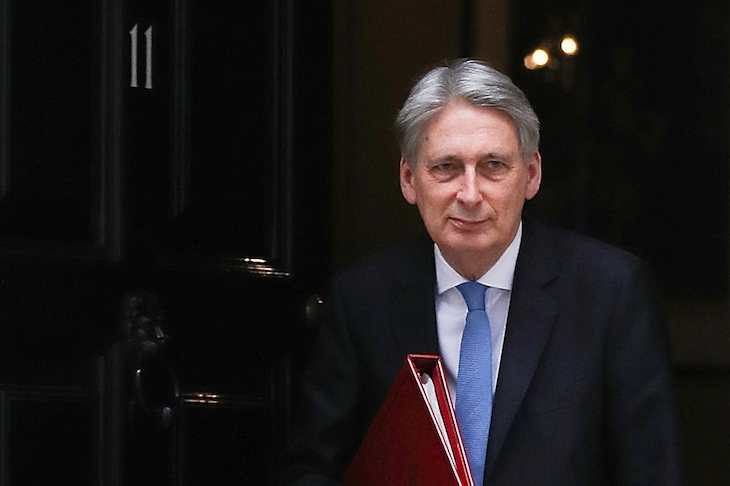Philip Hammond declared himself to be an optimist in his Spring Statement today – and he had a few boasts to prove it: manufacturing enjoying the continued longest growth in 50 years, three million more jobs, borrowing down. He was laying into Labour, in a way he wishes he’d been allowed to during the general election campaign. But the news was in the accompanying financial forecasts: here’s what jumped out at me.
1. The Tories have given up trying to balance the books. Hammond didn’t make an announcement to this effect, but he laid out plans for deficits for years to come. George Osborne at least pretended to be, say, five years away from eliminating the deficit. Hammond has abandoned the pretence. In his Budget he said that if he has extra leeway then he’d spend more, rather than actually balance the books. The below chart shows the deficit forecasts (compared to Osborne’s last Budget).

2. The deficit is no longer large by international standards, so the Tories might use this as an excuse to keep on borrowing.

3. The Tories are even telling porkies about debt – claiming it’s going down when it is rising. This was a trick Ed Balls tried in 2008: he’d claim that debt was falling, when he meant that the debt/GDP ratio was falling. This is not a technical point. It’s an attempt to fool journalists, to claim that debt is falling ‘as a share of GDP’ but on air they miss out the second bit, so the listened just hears that ‘debt is falling’. When George Osborne tried this porkie in 2015, he had to abandon it after outcry. Dominic Raab was sent out to spin this line on the Today programme this morning (and wasn’t challenged). But debt is rising: from £1.74 trillion now, to £1.83 trillion next year and £1.88 trillion by March 2020. Here’s a graph.

4. If you want to look at debt/GDP you can see one thing in Hammond’s favour: it doesn’t look quite as bad as it did when he delivered his Budget last year. We must also remember that – thanks to QE – the government owes a lot of this debt to itself (via the Bank of England) so things might not be quite as bad as the graph suggests. But compared to other Tory forecasts, it does look pretty bad.

5. The OBR is being pessimistic in its growth forecasts. After having slashed growth forecasts last time, based on a pessimistic view about productivity, the OBR perhaps didn’t want to lose face by upgrading too much this time. As the below chart shows, the OBR’s upgrades were small and grudging – its forecasts are now behind the market consensus. As Hammond says, forecasts are there to be beaten. Since its inception, the OBR has not been an outlier – so maybe, having taken a major call, it is become wedded to that call and we’ll have to price in a negative bias on GDP growth.

6. Hammond has exaggerated the wage growth recovery. He spoke about it as if a great corner was about to be turned, but OBR figures (for what they’re worth) are still quite bleak. The data runs until 2023 (the below graph extends the trend beyond that date) and still we don’t see average earnings recover to 2007 levels until about 2025. This is the flip side of high employment: when people are cheaper, companies hire more. But we have to ask if they have done so at the expense of investing in kit and machinery, thereby keeping too many UK workers in low-pay positions?

7. Who’s afraid of robots? In his response, John McDonnell was quite right about the UK having the lowest robot ratio in the developed world. Here’s the graph.

8. The jobs miracle is still going strong yet again. This is one of the best economic stories that the Tories have to tell.

9. Brexit payments: falling fast. The OBR made its own estimate of Brexit payments, saying we’d be paying £10bn a year if we were to stay in. But as things stand: considerably less. Hangover payments will continue for a while due to pensions etc but overall the savings from the £10bn annual average would be bigger than you could fit on a bus.








Comments